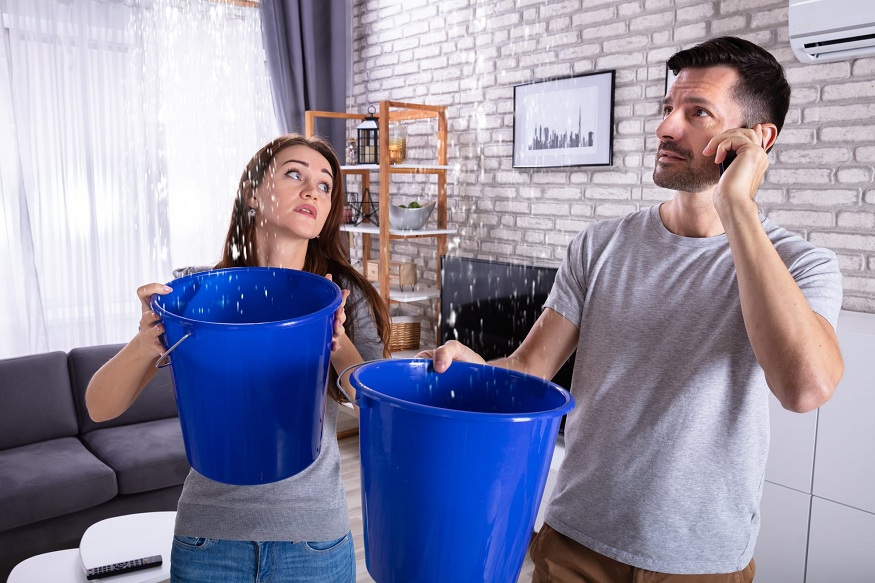It usually starts with something small—a tiny drip from behind the washing machine, a gutter that overflows during a storm, or a toilet that runs longer than it should. But water, when left unchecked, has a way of turning minor issues into major disasters. Floors warp, walls bubble, and mold quietly sets in behind the drywall. Within hours, a home can go from dry to devastated.
In places like Schaumburg, where Midwest weather brings everything from heavy snow to spring floods, dealing with water damage isn’t just a rare emergency—it’s a reality for many homeowners and businesses. Fortunately, the rise of advanced restoration techniques, responsive local teams, and community awareness has changed how fast people recover when the worst happens.
Table of Contents
Not All Damage is Immediate—or Visible
What makes water damage especially tricky is its deceptive nature. Sometimes it’s obvious—a burst pipe, a flooded basement, a soaked ceiling. But often, the real damage hides in the places we don’t see right away. Moisture can seep behind walls, under floorboards, and into insulation. Left untreated, it creates the perfect environment for mold growth, wood rot, and long-term structural problems.
That’s where modern restoration services come in—not just to clean up the mess, but to stop long-term damage before it starts. Professionals now use thermal imaging, moisture meters, and remote sensors to locate hidden pockets of moisture. What used to take days of trial and error can now be mapped in minutes.
Schaumburg’s Growing Need for Rapid Response
As a suburban hub with a mix of residential neighborhoods, shopping centers, and office buildings, Schaumburg is particularly vulnerable to water damage scenarios that range from frozen pipes to sprinkler system failures.
With its cold winters and humid summers, homes in the area are exposed to seasonal risks year-round. A burst pipe in January may have a very different restoration process than a flooded crawlspace during July’s thunderstorms. Each requires tailored care—and urgency.
That’s why having access to a reliable water damage restoration service in Schaumburg isn’t just a nice-to-have. It’s critical. The first 24 to 48 hours after a water event are the most important. Responding quickly can mean the difference between salvaging hardwood floors and having to replace an entire subfloor.
Inside the Restoration Process
Most people don’t think about water damage restoration until they need it. But the process is more complex—and more scientific—than many realize. It typically unfolds in several key stages:
- Assessment and Inspection
Professionals arrive to evaluate the extent of the damage. Using moisture sensors, thermal cameras, and good old-fashioned inspection skills, they determine what areas are affected—and what’s not visible to the naked eye. - Water Removal
High-powered pumps and vacuums extract standing water. Even an inch of water can contain hundreds of gallons that need to be removed as quickly as possible. - Drying and Dehumidifying
Once the bulk of the water is gone, powerful industrial air movers and dehumidifiers are used to draw moisture out of the air and building materials. This step often takes days and must be monitored continuously. - Cleaning and Sanitizing
Water from floods or sewage backups is rarely clean. Surfaces are disinfected, odors are neutralized, and antimicrobial treatments are applied to prevent mold growth. - Restoration
The final phase involves repairs—from replacing drywall and flooring to repainting and rebuilding cabinetry. In some cases, it’s also an opportunity to improve things that weren’t ideal before the incident.
Lessons in Resilience
One local Schaumburg resident, James Parker, experienced firsthand how quickly things can unravel. A stormwater backup during an intense thunderstorm left over four inches of water in his basement. “I was overwhelmed,” he recalls. “I had no idea what to do first—call insurance, start cleaning, try to shut the water off?”
Within hours, a water damage restoration service in Schaumburg was on site, assessing the damage and beginning water removal. “They had machines I’d never seen before,” James said. “By the next morning, it was already drying out. They even helped document everything for insurance.”
What struck James most wasn’t just the speed of the response—it was the calm expertise that turned a chaotic situation into a manageable one. “They’d seen it all before, and that gave me a lot of confidence.”
Prevention Still Matters
While emergency services are essential, the best kind of water damage is the kind that never happens. Experts recommend annual plumbing inspections, keeping gutters clean, sealing basement walls, and ensuring your sump pump is functioning.
During winter, pipes near exterior walls should be insulated, and interior cabinet doors should be left open to allow warm air to circulate around plumbing. Installing smart water sensors near appliances and in vulnerable areas like basements can provide early warnings that prevent disaster.
Many insurance companies now offer discounts for homes that install leak detection systems or smart shut-off valves—an investment that can save thousands down the road.
A Changing Industry for Changing Times
Today’s restoration industry is very different from the old “rip and replace” model. There’s more science, more technology, and more training. Certification programs, environmental awareness, and new drying techniques mean professionals are equipped not only to clean up but to protect what matters most—your health, your belongings, and your peace of mind.
Some companies even offer 24/7 emergency response, coordinating directly with insurance providers, contractors, and homeowners to streamline the process.
With climate patterns becoming less predictable, the demand for high-quality water restoration services is expected to grow. Schaumburg’s experience is part of a broader shift in how suburban communities prepare for and respond to water emergencies.
More Than Cleanup—A Sense of Control
At its core, water damage restoration is about more than removing moisture. It’s about restoring a sense of safety and control during a moment that feels anything but.
Whether it’s a broken sump pump during a spring rain or a frozen pipe in February, knowing who to call—and that help is only minutes away—can be the difference between a catastrophe and a story you someday tell with a grateful smile.

